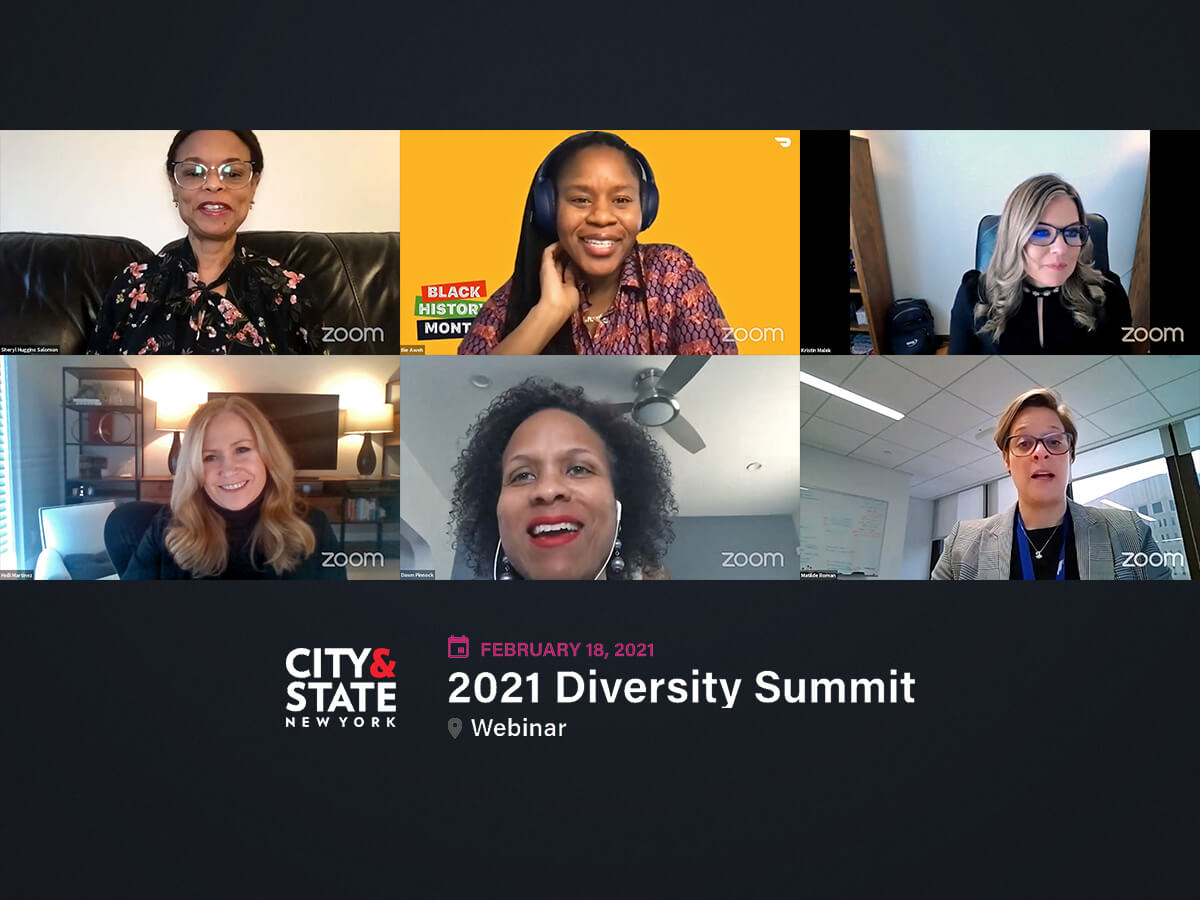NEW YORK, February 19, 2021 — The COVID-19 pandemic has deepened longstanding inequities experienced in New York’s workforce, along lines of race, gender, sexual orientation and gender identity, disability and income status. Diversity and inclusion executives in city government and the business sector shared their insights yesterday on how to achieve an equitable recovery. City and State New York hosted the discussion during their 2021 Diversity Summit, and McSilver Institute Chief Communications Officer Sheryl Huggins Salomon served as moderator.
Video
As the New York Times reports, women have borne the brunt of the pandemic’s effects on employment and childcare resources, and are disproportionately among those who dropped out of the workforce last year – particularly Latinx women. Meanwhile, according to a report by the New York City Comptroller’s office, nearly one in four New Yorkers of color wound up losing their jobs at one point last year during the pandemic. That was about 10 percentage points higher than what white New Yorker’s experienced.
That was on top of prior racial and gender inequities in employment and wages. For instance, according to a report last year by the Center for an Urban Future, Black people make up 21 percent of the overall workforce and 22 percent of the city’s population, but less than 10 percent of those in well-paying industries such as advertising, the securities industry, publishing, computer systems design and motion pictures and video.
Tracking data across city agencies is important tool for identifying such workforce trends and aligning marginalized groups with opportunities, said Dawn Pinnock, Executive Deputy Commissioner for People Operations at the New York City Department of Citywide Administrative Services. She noted that women and people of color are more likely to gravitate toward social service roles within city government and less toward uniformed roles, such as in law enforcement. More education, training and leadership development is necessary to ensure people in these groups are aligned with emerging employment opportunities. “We need to market a job before it actually exists — that’s why the data we use is so important,” she said.
Other takeaways included:
Workers in communities hard-hit by COVID-19 face special challenges that employers must address. For instance, many women need help with child-care challenges created by remote learning, said Matilde Roman, Chief Diversity and Inclusion Officer at NYC Health + Hospitals. She added, “We also need to recognize the unsung heroes in this space… to provide critical operations to keep hospitals open. It’s all hands on deck.”
Investment by big businesses in supply chain diversity has a multiplier effect in job creation, said Kristin Malek, Director of Business Diversity at CDW. “It absolutely matters where we spend money.”
Black technicians only make up 10 percent of roles in telecommunications, noted Holli Martinez, Vice President of Diversity and Inclusion at T-Mobile. Therefore, they have a responsibility to actively develop pipelines in partnership with community-based organizations. To that end, they’ve external diversity council that includes partners such as the National Urban League and National Action Network.
Responding to a question by Salomon about overrepresentation of people of color in gig economy jobs, Bie Aweh, Senior People Growth Manager for Women and Underrepresented Talent Development at DoorDash, said that her company has a Black Dashers council that tells them of problems they face, such as incidents of discrimination when on calls. She also said they are working on developing a pipeline to corporate office opportunities.
See other videos from the 2021 Diversity Summit at City and State New York‘s website.
